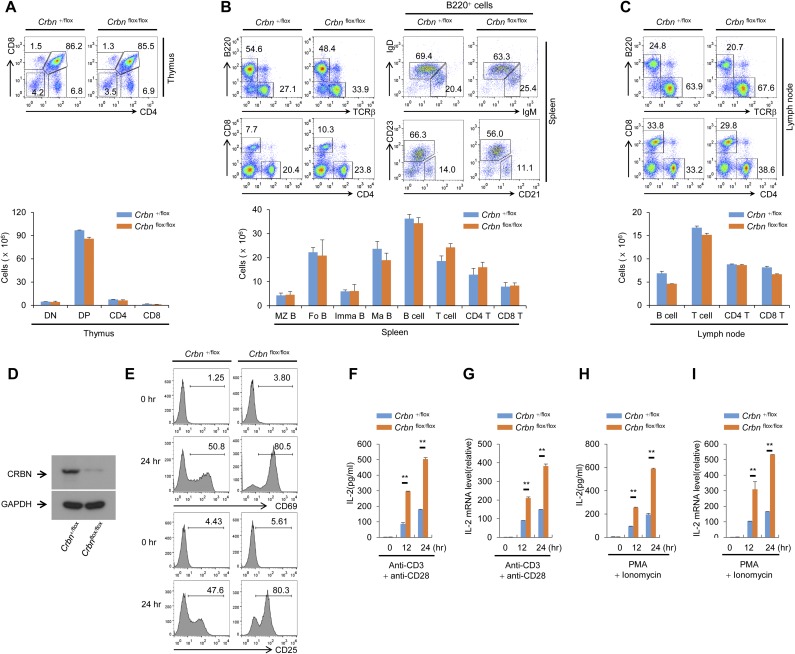Fig. S8.
T-cell–specific deletion of Crbn gene does not affect T cell development or activation. (A) T-cell development in the thymus of Crbnflox/flox;Cd4-Cre mice and Crbn+/flox;Cd4-Cre mice was analyzed by flow cytometry. (B and C) Lymphocytes in the spleen (B) and lymph nodes (C) were analyzed by flow cytometry. (D) Loss of CRBN protein expression in CD4+ T cells from T-cell–specific Crbnflox/flox;Cd4-Cre mice was confirmed by immunoblot analysis with an anti-CRBN antibody. (E) CD4+ T cells from T-cell–specific Crbnflox/flox;Cd4-Cre and Crbn+/flox;Cd4-Cre mice were stimulated with anti-CD3 and anti-CD28 antibodies for the indicated times. After activation, surface expression of CD69 and CD25 was analyzed by flow cytometry. (F–I) IL-2 secretion and IL-2 mRNA expression in CD4+ T cells stimulated with either anti-CD3 and anti-CD28 antibodies (F and G) or PMA and ionomycin (H and I) were analyzed by ELISA and quantitative RT-PCR. Data are representative of three independent experiments. Results are expressed as mean ± SD. *P < 0.05; **P < 0.01, Student’s t test.

